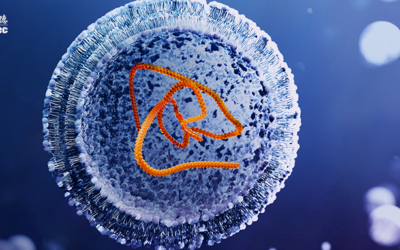First-in-human (FIH) trials are studies during which a drug is administered to humans for the first time after its preclinical testing, helping researchers determine the safe dose range for further clinical development. To begin FIH trials, researchers have to demonstrate that the compound is reasonably safe for initial use in humans. In this article, we discuss the toxicity data that helps you do just that.
Also known as phase 1 studies, first-in-human trials are studies that follow regulatory submission in the countries where testing will be conducted. In the United States, this filling is the Investigational New Drug (IND) application.
A comprehensive IND application depends on your full clinical plan, molecule type, and therapeutic indication. However, IND-enabling testing routinely includes a series of safety pharmacology studies, genetic toxicology studies, and toxicology studies with supporting DMPK and bioanalytical data . Phototoxicity, immunotoxicity, and abuse liability studies are included on a case-by-case basis.
The goal of preclinical testing is to demonstrate that a compound is reasonably safe and exhibits pharmacological activity that justifies commercial development. Specifically, toxicity data will help to:
- Identify organ toxicity
- Assess the relationship to drug exposure
- Determine on‐target and off‐target effects
- Evaluate relevance to humans
- Establish safety biomarkers to monitor in the clinic
Toxicity Data to Assess Before First-In-Human Trials
Here’s an overview of the type of toxicity data you will need for your IND filing before you can design and conduct FIH studies.
#1. General Toxicology Data
General toxicology studies assess the potential for adverse effects after a single dose or repeated exposure. This data informs researchers about:
- The maximum tolerated dose (MTD) and/or dose range-finding (DRF) studies. While these studies are non-GLP, they generate essential toxicity data to inform appropriate dose selection of your GLP toxicology studies, help you understand your drug compound toxicity profile in each testing species, and prevent costly repeat GLP studies.
- Toxic and secondary pharmacological effects via single dose toxicity studies. These studies are another important precursor to your pivotal GLP study, helping you define and characterize the intrinsic toxicity of your testing compound and identify the MTD.
- Potential target organs of toxicity, exposure, and potential toxic effects via repeat dose studies. Study duration and dosing regimen vary depending on your clinical plan. For example, a 28-day toxicology study often supports up to 28-day clinical trials, and longer studies will allow you to proceed through phase 2 trials and beyond.
#2. Genetic Toxicology Data
Genetic toxicology studies evaluate the ability of a drug to cause mutations or chromosomal damage, predicting its carcinogenic potential. Here is a brief overview of standard in vitro and in vivo genetic toxicology tests and the toxicity data they provide:
| Test | Toxicity Data Provided |
| Ames Assay | – Mutagenic potential and mechanism – Revertant colonies in bacteria (indicative of gene mutations) |
| In Vitro Chromosomal Aberration Assay | – Structural chromosomal damage – Chromosomal aberrations in cultured mammalian cells – Clastogenic effects |
| In Vitro Micronucleus Assay | – Clastogenic and aneugenic effects. – Micronuclei in dividing cells – Detection of chromosomal damage |
| Mouse Lymphoma Assay | – Mutagenic potential – Mutant lymphoma cells – Gene mutations in the thymidine kinase (tk) gene – Clastogenic and aneugenic effects |
| In Vivo Micronucleus Assay | – Chromosomal damage in vivo – Micronuclei in peripheral blood or bone marrow cells – Systemic genotoxicity |
| In Vivo Chromosomal Aberration Assay | – Structural chromosomal damage in vivo – Chromosomal aberrations in bone marrow or other tissues – Clastogenic effects |
ICH S2 (R1) is a scientific guideline providing recommendations on the standard genetic toxicology battery for prediction of potential human risks. This guidance applies to small molecules (not biologics).
#3. Safety Pharmacology Data
Safety pharmacology studies are to evaluate the potential of undesirable pharmacodynamic effects of a drug on physiological functions in relation to exposure in the therapeutic range and above. These studies are required for small molecule modalities by the FDA.
The safety pharmacology core battery program is to help researchers understand:
- Potential adverse effects on the central nervous system via functional observation battery (FOB) or modified Irwin’s test. Evaluation includes motor activity, behavioral changes, coordination, sensory/motor reflex responses and body temperature.
- Effects on respiratory system using appropriate methodologies. Assessment includes respiratory rate and other measures of respiratory function (e.g., tidal volume, minute ventilation, and respiratory pattern.
- Effects on cardiovascular system via cardio-telemetry. This includes the potential for arrhythmias, blood pressure changes, and other cardiac effects, through data such as ECG monitoring, blood pressure, heart rate, and temperature.
Supplementary safety pharmacology studies are to evaluate potential adverse pharmacodynamic effects on organ system functions (e.g. renal/urinary system or gastrointestinal system) not addressed by the core battery or repeated dose toxicity studies when there is a cause for concern. The study should be conducted on a case-by-case basis.
#4. Other Toxicity Data
Depending on your molecule type and indication, other categories of testing might be necessary to generate the right toxicity data for your IND submission. These include:
- Immunotoxicity: evaluates the adverse effects a compound has on the immune system. ICH S8 Immunotoxicity Studies for Human Pharmaceuticals provides recommendations on testing approaches for immunotoxicity.
- Phototoxicity: evaluates the toxic response that may be elicited after a compound is administered and then exposed to light. An initial assessment of the phototoxic potential based on the photochemical properties of the drug and information on other members in the same class should be conducted according to ICH S10 Photosafety Evaluation of Pharmaceuticals.
- Abuse liability: assesses the potential of a drug to be abused, misused, or lead to dependence. Compounds should be evaluated for abuse potential based on the mechanism of action and similarity to known drugs of abuse.
Conclusion
Toxicity data generated by general toxicology studies (single and repeat dose studies), genotoxicity studies, and safety pharmacology studies will help enable initiation of a first-in-human trial. However, it’s important to consider the property of test compound, target population, and clinical plan, in order to determine the essential set of nonclinical safety studies required by the relevant regulatory authorities.
At the end of the day, your toxicity data needs to answer the right questions for your IND submission. So, plan your safety assessment program based on what you want to do in your clinical trials.
The right safety assessment laboratory testing partner can help you manage timelines, plan the right studies, and meet regulatory requirements. All so you can get to your next major milestone: first-in-human trials.
Learn more about WuXi AppTec’s Safety Assessment services or talk to one of our experts by contacting us today.
As a global company with operations across Asia, Europe, and North America, WuXi AppTec provides a broad portfolio of R&D and manufacturing services that enable the global pharmaceutical and life sciences industry to advance discoveries and deliver groundbreaking treatments to patients. Through its unique business models, WuXi AppTec’s integrated, end-to-end services include chemistry drug CRDMO (Contract Research, Development and Manufacturing Organization), biology discovery, preclinical testing and clinical research services, helping customers improve the productivity of advancing healthcare products through cost-effective and efficient solutions. WuXi AppTec received an AA ESG rating from MSCI for the fourth consecutive year in 2024 and its open-access platform is enabling around 6,000 customers from over 30 countries to improve the health of those in need – and to realize the vision that “every drug can be made and every disease can be treated.”


